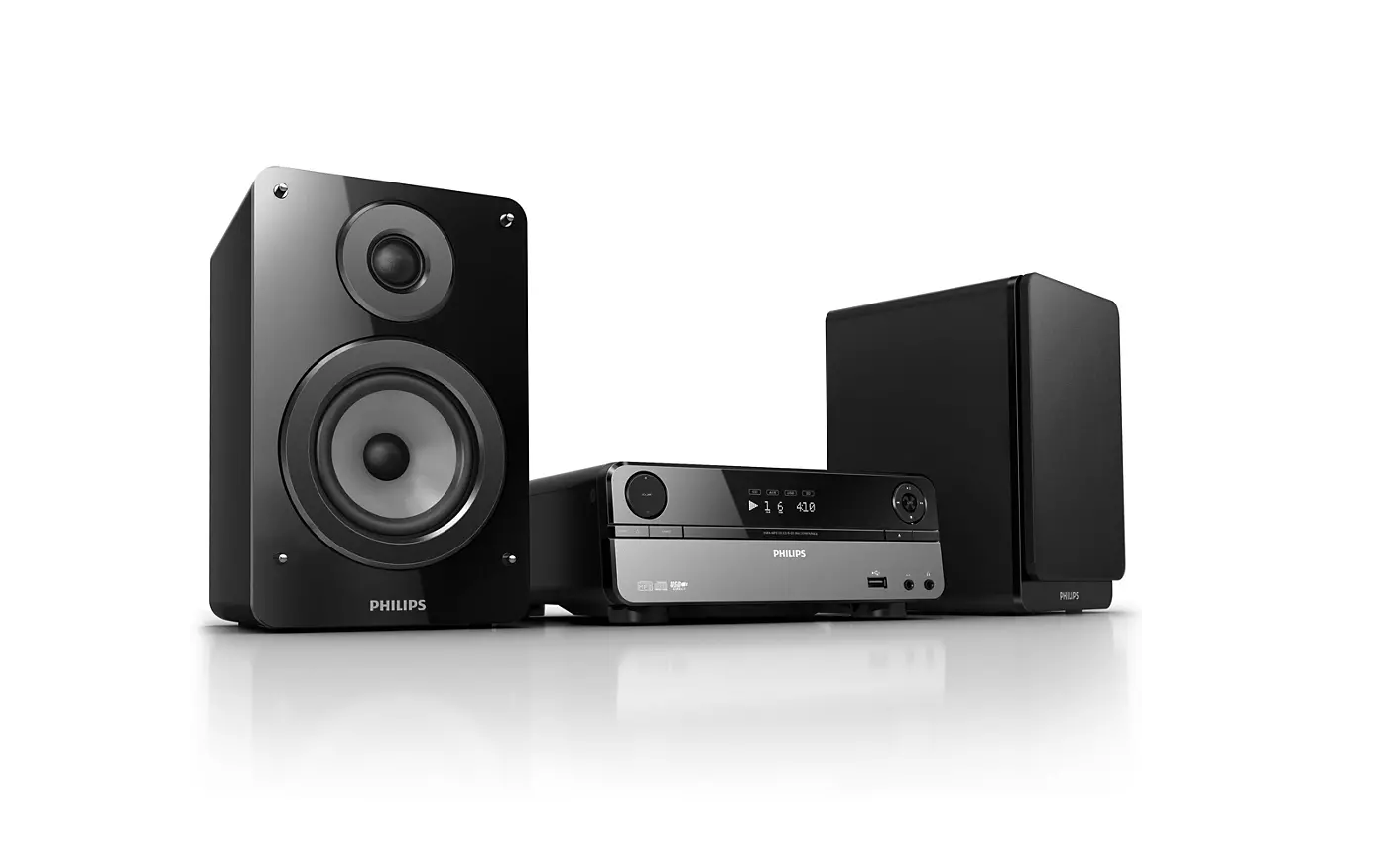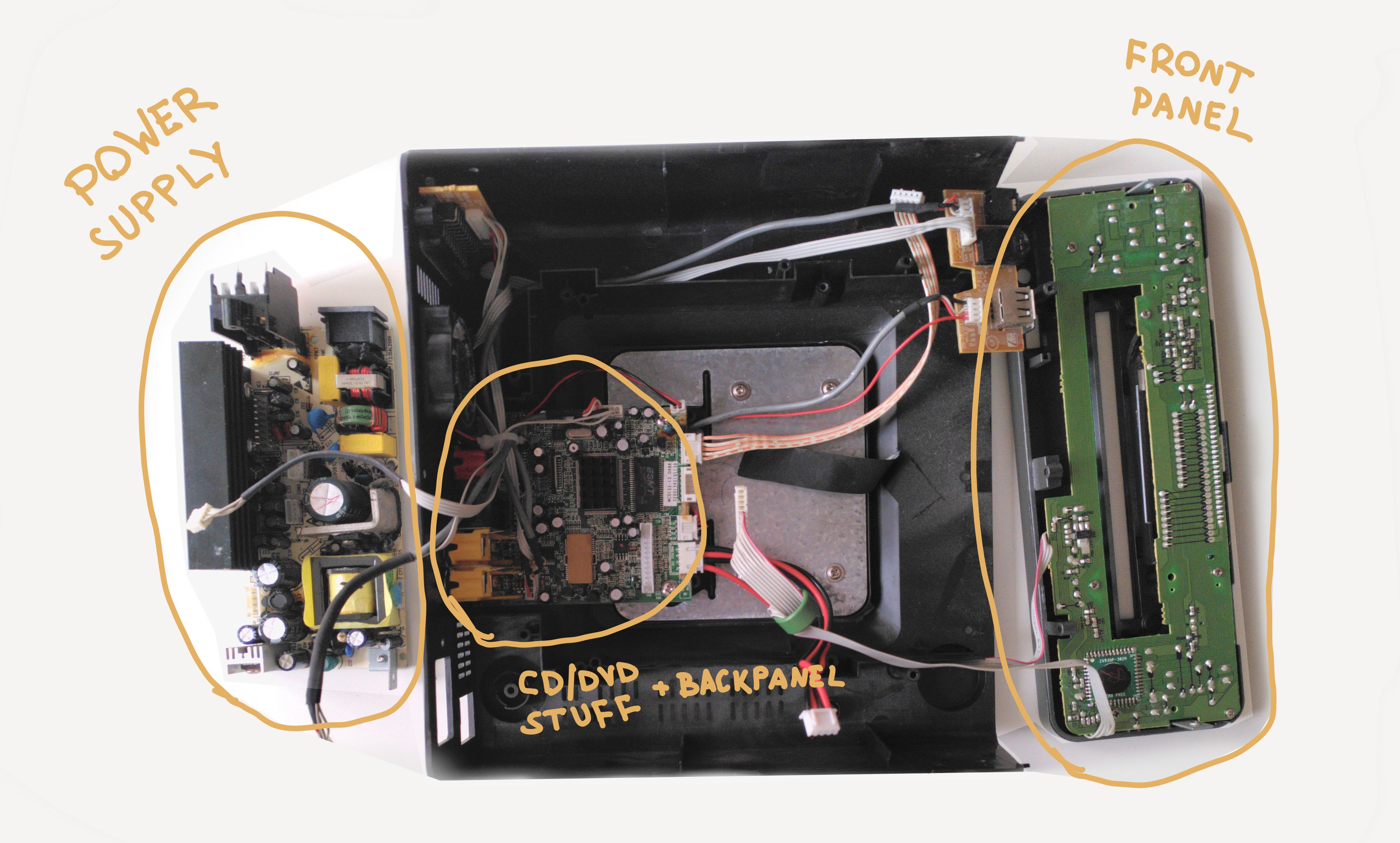It started with a fail...
Sometime ago I found this old DVD player and a set of speakers, which I used for listening to music, for years. If I turned off my laptop, which was connected to the AUX input of the DVD player, it would make this annoying sound. Can’t remember if it was high-pitched squeeching or a low-pitched hum, but anyways I ended up turning off the DVD player everytime as well. But for this, I would have to…STAND UP AND PRESS AN EXTRA BUTTON, so something had to be done about it.

My knowledge and motivation in audio electronics are not too great, so I decided to do a simple but good-enough hack: wireless control of the power button on the player. So, the first step was clear: open up the case, figure out what is going on, locate the power button, add a wirelessly-controlled-switch somewhere around there.
Aaand it’s gone
I managed to open the case of the DVD player (Phillips MCD 122) and guessed what the three PCBs are for: power-supply, CD/DVD stuff and the “frontend”.

Since the power button was located on the front panel, I focused on the “frontend” PCB only. It’s called the display board in the Phillips’ service manual which contains lots of schematics and was useful in figuring stuff out. Kind of.
There was an IC1 connected to all the buttons and the LCD display, with some wires going to other parts of the system (eg. power supply board). I soldered a wire to the input pin where the button was connected and tried applying different voltages to it: GND, 2.7V, 3V and 5V. Nothing seemed to do the job. In fact, after some more desperate poking around, the original buttons stopped working and the whole display didn’t turn on anymore. I fried the chip, I guess, whoopsie.
Well, it was fun anyway. In retrospect, I see that buttons are connected in somekind of a matrix which I’ve seen before somewhere, it’s probably a popular trick for saving GPIO pins and might explain why the button did not behave the way I expected. Anyways, better luck next time.
-
ZX935P; Can’t find much about it on the internet. Is it a microcontroller? An LCD driver? ↩